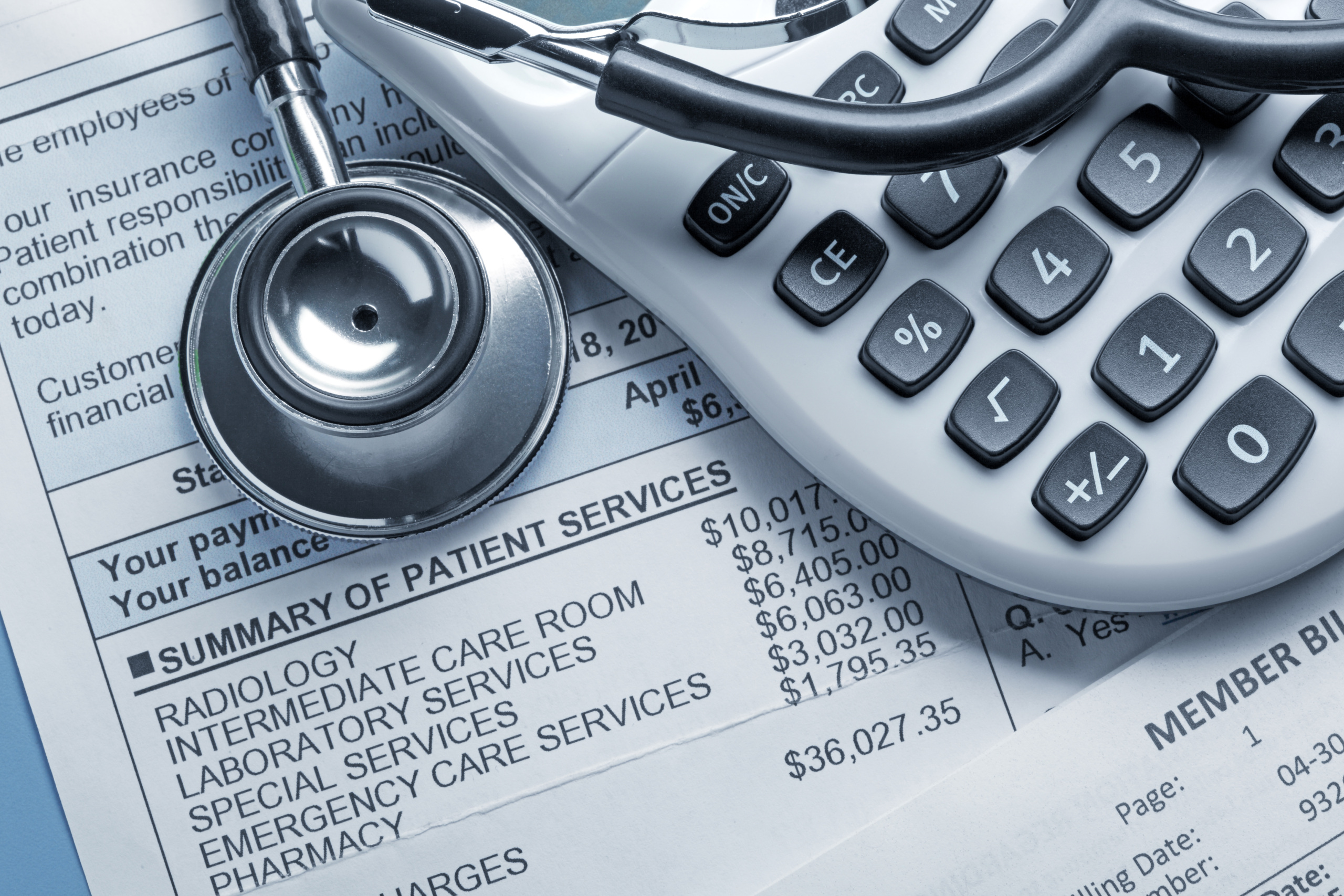
What the coronavirus pandemic means for health insurance
As someone who often works on health care issues, I’ve been watching the coronavirus crisis with an eye to what it means for our overall health care system. Obviously, the immediate flood of patients threatens to overwhelm health care workers and impairs their ability to provide the care we’re accustomed to. But the coronavirus will also have far-reaching impacts on the health care system’s structure, costs, and insurance. Exactly what those changes are will not be known for a while—but I’ve been exploring likely scenarios. I’ve split this discussion into two separate blog posts, starting with insurance and then moving to larger systemic cost and structural questions.
The coronavirus pandemic is reminding us, once again, of how expensive the nation’s health care system is. It’s the high cost of health care that makes health insurance so expensive for individual consumers, employers and the nation, and the cost and structure of insurance can have real consequences for health. Here are some big changes I’ve been wondering about related to insurance:
How many more people will be without health insurance?
For many people, when they lose their job they lose their insurance. Nearly half of Americans currently obtain health insurance through an employer, and between nine and 35 million Americans might lose job-based insurance because of the coronavirus pandemic. For context, more than 27 million people didn’t have insurance before the pandemic. (Note, too, that others who are newly unemployed never had employer-sponsored insurance because they worked in industries that don’t provide insurance to workers).
People who did have insurance may have the option to remain on their employer’s group health insurance plan, but they’ll have to pay the premium directly—and this is likely to be far too expensive for someone with no income.
Newly unemployed people can purchase insurance through the Affordable Care Act (often with a subsidy) or may qualify for Medicaid coverage if their income drops low enough. (And assuming they live in a state that hasn’t created huge hurdles to enrolling in Medicaid. Approximately two-thirds of states expanded Medicaid as allowed by the Affordable Care Act, but the others haven’t, and have even made it more difficult for people to enroll.) They also might opt to forgo insurance entirely.
People without insurance who contract COVID-19 may not have to pay for testing and treatment. Federal legislation means that testing for COVID-19 should be free for uninsured people who are able to temporarily enroll in Medicaid, while President Trump has promised that treatment will be free for those who lack insurance. However, we don’t know, for example, if long-term health problems stemming from COVID-19 will be covered. Furthermore, though uninsured patients may be protected from having to pay for treatment of COVID-19, they will not be covered if they seek care for any other health problems.
Will the cost of private insurance jump dramatically next year, or will the cost increase be more in line with historical trends?
I expect insurers will propose large increases in premiums for 2021, though I’m not convinced that big rate hikes will be justified.
-
A few weeks into the coronavirus pandemic, Covered California, the state’s marketplace for individuals who want to purchase insurance through the Affordable Care Act, predicted that rates will increase by 40 percent next year. Nearly nine in 10 people who bought individual or family insurance through the Affordable Care Act in 2019 qualified for a subsidy, so most people will be protected from this jump in premiums because subsidies, which are designed to limit the share of income that people have to pay for insurance, will also increase. (Note that higher subsidies mean higher expenses for taxpayers, which I’ll talk about in my next post.) But for people who don’t qualify for a subsidy—because they earn more than the income limit or are not a U.S. citizen or legal resident—the cost of insurance will be far higher, and thus some in this group may choose to skip buying insurance.
-
Premiums may increase for all health plans, not just those sold on the exchanges, because all insurers are experiencing the same cost pressures and uncertainty about future expenses. Employers will then face increases in health insurance costs and are likely to shift more costs onto employees or to reduce coverage. Insurers have warned that premiums may rise dramatically and have asked for federal money.
It also is possible that insurance rates won’t rise any faster because of COVID-19 than they have in recent years, because any increase in COVID-19-related spending will be outweighed by other avoided spending. A major insurer, UnitedHealth, just announced first quarter earnings that exceeded Wall Street expectations. Patients have been avoiding all but essential care, while relatively few patients have required hospitalization for COVID-19. And as social distancing measures reduce the number of people who get sick from the coronavirus, perhaps the total increase in coronavirus-related health care expenses will be far smaller than projected.
Regulators should be prepared to scrutinize all premium price changes proposed by insurers for 2021. Regardless of whether actual health care spending declines, increases a little or increases a lot, insurers may argue that uncertainty about future spending warrants steep rate hikes to ensure they have adequate reserves to cover any scenario. Regulators should be checking with insurers now to make sure they are building their reserves during this time of lower health care spending. For next year’s rates, regulators should rely on actuaries to review the prices proposed by insurers to make sure they are sufficient to cover projected costs but not excessive. Advocacy organizations can help protect consumers by providing aggressive rate review programs. For example, for years OSPIRG has reviewed proposed rate increases from insurers in Oregon and provided extensive feedback to regulators on which rate hikes appear unjustified. As a result, OSPIRG has helped consumers avoid $150 million in health insurance rate increases.
Will insurers withdraw from some markets?
If insurers do end up incurring much higher-than-expected costs this year—either because of the cost of caring for patients with COVID-19 or because patients who have been avoiding treatment for heart attacks, infections and other ailments eventually seek care once they are much sicker—then some health insurers may struggle financially.
Plans with inadequate reserves could be in financial trouble. For example, Moda Health was forced to withdraw from Alaska in 2016 after losing millions of dollars, leading regulators to determine that it didn’t have enough financial reserves to continue to offer insurance in the state. For the rest of 2016, regulators kept an eye on the insurer to confirm it upheld its commitment to existing customers but would not allow it to renew any plans or sell to new customers. Could a similar thing happen to other insurers as a result of the coronavirus crisis?
If so, people trying to buy insurance through an Affordable Care Act marketplace will have fewer choices, or maybe no choice. For 2020, approximately 10 percent of people purchasing insurance through the Affordable Care Act lived in a county with only one insurer offering plans. The problem was more common in rural areas. This problem could become more widespread if COVID-19 strains the finances of insurers.
Will rules for high-deductible health plans change after the coronavirus pandemic?
As of 2018, nearly half of Americans with private insurance had a plan with a high annual deductible, meaning those patients have to pay potentially thousands of dollars out of pocket before their insurance begins to pay for the care they receive. High-deductible plans often have lower monthly premiums, so consumers or their employers may choose a high-deductible plan to reduce monthly insurance costs. The risk, of course, is that if a patient gets sick, they’ll face bigger out-of-pocket expenses than if they were on a plan with a lower deductible.
The tally of how much a patient has paid toward their deductible restarts each year when they renew their insurance. Because we’re still early in the calendar year, most people haven’t met their health insurance plan deductibles. This creates a financial disincentive to seek care right now.
Will patients on high-deductible health plans avoid seeking medical care for COVID-19 because they fear how much that care will cost? Research shows that, with other ailments, patients with high-deductible plans use less health care, experience delays in receiving needed care, and do not take prescribed medication as reliably. This results in worse health and ultimately higher total spending on health care. The odds seem greater that when many Americans have seen their incomes drop due to social distancing measures and the resultant economic slowdown, patients will avoid seeking necessary care because they fear how much it will cost them.
Obviously, it’s bad for a patient not to get needed care, whether for COVID-19 or any other disease. Coronavirus may help expose the health consequences of high-deductible health plans, and if it becomes clear that high-deductible health plans were a significant factor in patients avoiding care, policymakers could call for lower caps on deductibles.
Those are my four major questions about the impact of the coronavirus pandemic on the nation’s already flawed health insurance system. In my next blog post, I’ll explain my questions about how the overall health care system and total health care spending might be affected.
Photo: Valeriya via istockphoto
Topics
Authors
Elizabeth Ridlington
Associate Director and Senior Policy Analyst, Frontier Group
Elizabeth Ridlington is associate director and senior policy analyst with Frontier Group. She focuses primarily on global warming, toxics, health care and clean vehicles, and has written dozens of reports on these and other subjects. Elizabeth graduated with honors from Harvard with a degree in government. She joined Frontier Group in 2002. She lives in Northern California with her son.
Find Out More

What the coronavirus pandemic means for overall health care costs

Improving Price Transparency

Medical Debt Malpractice

